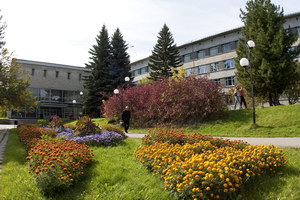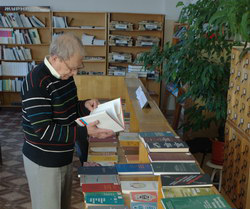Mathematical modeling and optimization of parameters of coal-fired combined cycle unit with gas-turbine cycle working medium heated in periodic regenerative heat exchangers

Enhancement of efficiency of energy plants on solid fuel is one of the crucial problems in development of energy technologies. Solution to this problem is sought in three main directions: 1) steam turbine units with ultra-supercritical steam parameters; 2) combined cycle units with intra-cycle coal gasification; 3) combined cycle units with coal combustion in pressurized fluidized bed and removal of ash from high-temperature combustion products in ceramic filters. The increase in energy efficiency of steam turbine units with ultra-supercritical steam parameters is limited by the capabilities of metals available in the energy machine building to operate under high temperatures, and the imperfection of Rankine thermodynamic cycle. The maximum possible efficiency of these units is estimated at 50%. The efficiency of combined cycle units with intra-cycle coal gasification may reach 52-54%. The main obstacle to the widescale use of these units is low reliability and unstable operation of gasifiers on steam- A ir blast, high price of coal gasifiers on steam-oxygen blast and high auxiliary power consumption. Energy efficiency of direct-fired coal combustion under pressure is limited by working temperatures of the fluidized bed and ceramic filters that vary in the range of 800-950°C. The efficiency of combined cycle units with direct-fired coal combustion in fluidized bed makes up 40-42%. Analysis of technologies for electricity production based on solid fuel shows that the optimal combination of reliability and energy and economic efficiency can be achieved through the use of gas-steam binary cycle in combination with coal combustion. However, the technology of coal combustion in the pressurized fluidized bed which is currently applied has considerable disadvantages that decrease greatly its competitiveness. From our viewpoint a rather promising technology to be studied is the one based on the use of air as a gas-turbine working medium which is heated in cyclic regenerative ceramic heat exchangers by the coal powder combustion products. In this case the working medium can be heated to essentially higher temperatures than at coal combustion in the pressurized fluidized bed. Here only a small amount of ash contained in the coal combustion products settles in the ceramic heat exchanger and then penetrates into the heated air. This makes it possible to provide high air temperature before turbine (1200-1300?) at an acceptable level of ash concentration at gas turbine inlet. The indicated cyclic ceramic heat exchangers have been thoroughly tested on the experimental models of closed-cycle MHD generators which proved them to be serviceable and reliable. To substantiate the efficiency of this technology it is necessary to perform its optimization studies by using the mathematical model of combined cycle unit with coal combustion and gasturbine cycle working medium (air) heated in regenerative heaters. The development of such a model and technical studies are the goal of the proposed report. © Tsinghua University Press, Beijing and Springer-Verlag Berlin Heidelberg 2012.
Библиографическая ссылка
Kler A.M., Tyurina E.A., Mednikov A.S., Staheeva E.V. Mathematical modeling and optimization of parameters of coal-fired combined cycle unit with gas-turbine cycle working medium heated in periodic regenerative heat exchangers // Cleaner Combustion and Sustainable World - Proceedings of the 7th International Symposium on Coal Combustion. 2012. P.470-473. ISBN (print): 3540356061; 9783642304446.
Скопировать



